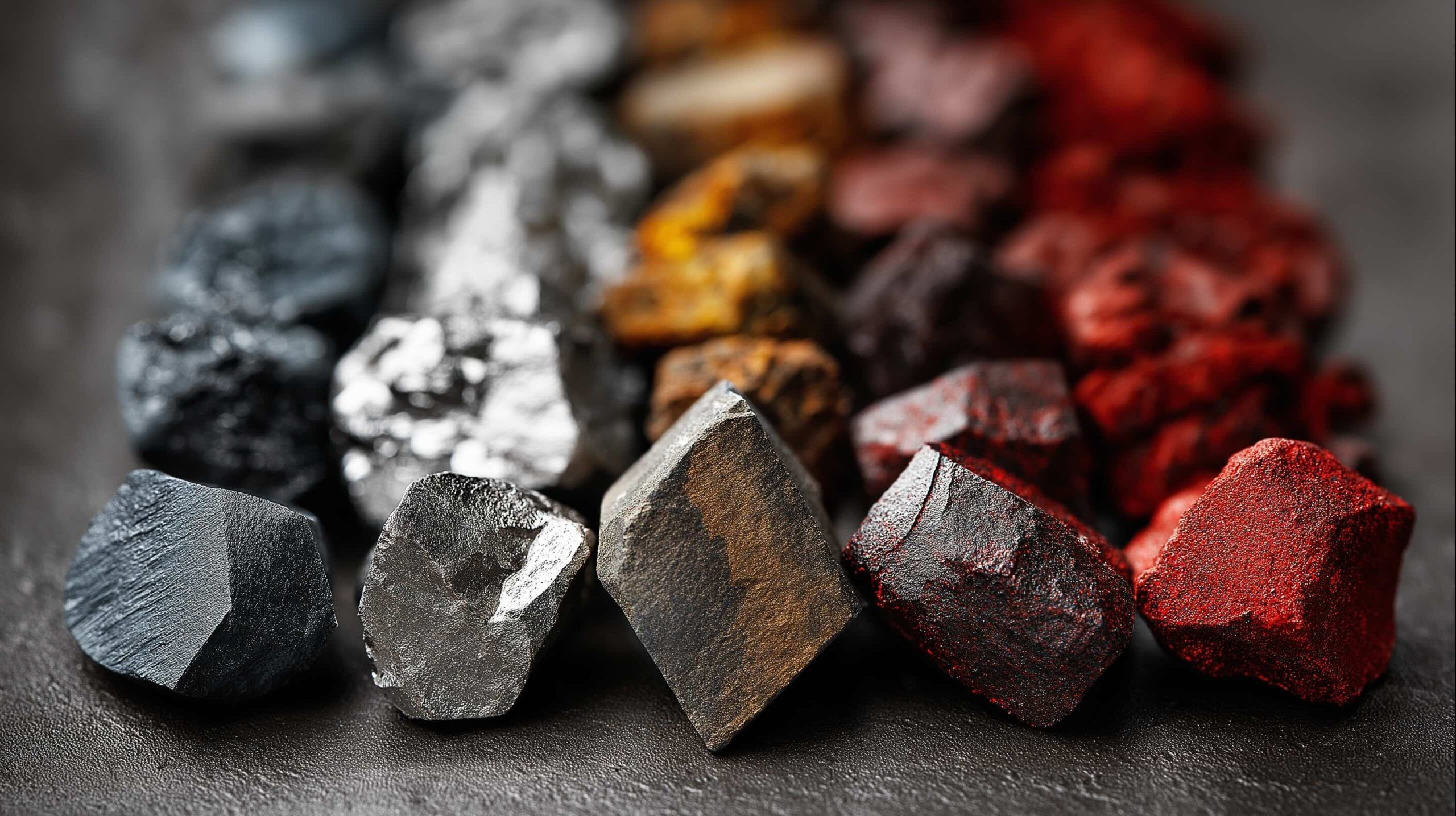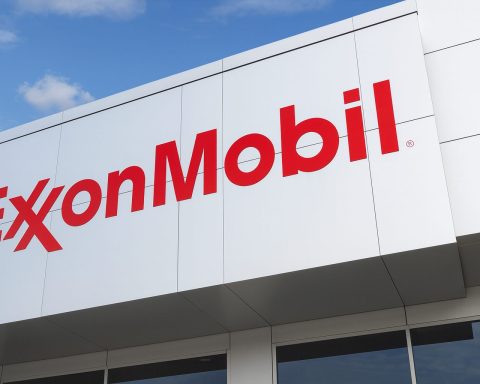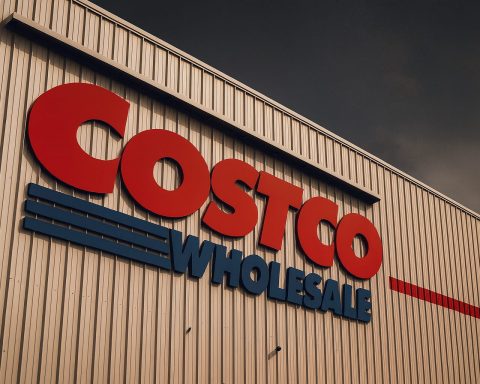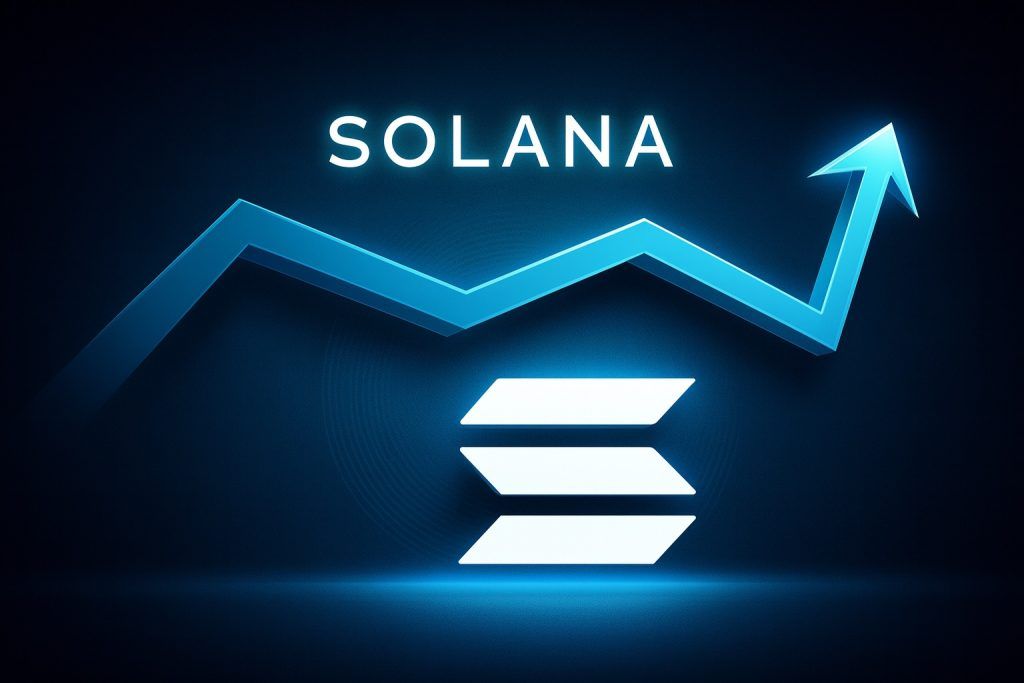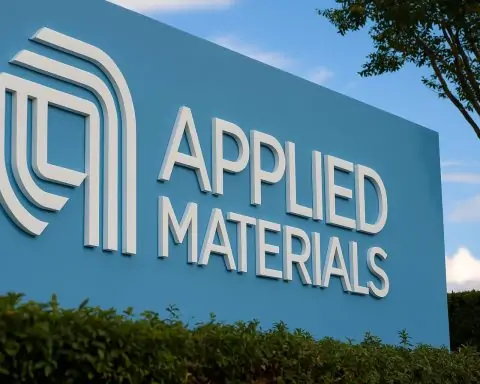- Beijing’s rare-earth bombshell – On October 9, 2025, China dramatically expanded export controls on critical rare earth metals, adding five more elements (holmium, erbium, thulium, europium, ytterbium) to an export-restricted list that already included seven others [1] [2]. In total, 12 of the 17 rare-earth elements are now under Chinese export curbs [3]. Beijing also imposed new licensing requirements on dozens of rare-earth refining technologies and magnets, extending its control deep into global supply chains [4] [5].
- Timing and leverage: The move comes just weeks before a planned meeting between U.S. President Donald Trump and China’s President Xi Jinping at an Asia-Pacific summit in late October [6]. Analysts say Beijing is wielding rare earths as a strategic lever in trade negotiations [7]. “This helps with increasing leverage for Beijing ahead of the anticipated Trump–Xi summit,” noted Tim Zhang of Edge Research [8]. By tightening its grip on materials the West needs, China gained a potent bargaining chip on the eve of high-stakes talks [9].
- Rare earths = tech’s Achilles’ heel: Rare earth elements – a group of 17 metals – are indispensable in high-tech and defense products, despite being used in small quantities. They enable powerful magnets, lasers and other components in electric vehicles, wind turbines, smartphones, semiconductor equipment, and military systems [10] [11]. For example, dysprosium (atomic number 66) is likened to “baking powder” in tech – a small but essential ingredient for EV motors, wind turbines, guided missiles and even chipmaking machines [12]. China dominates this supply, mining ~60% and processing ~90% of the world’s rare earths [13]. The U.S., by contrast, has only one major rare-earth mine and remains heavily import-dependent [14]. This has long been a strategic vulnerability in the U.S.-China tech rivalry [15].
- Beijing’s new rules – a global reach: Under China’s new export regime (Announcement No. 61), any company worldwide must now seek Chinese government approval to export products containing Chinese rare earths or made with Chinese rare-earth technology [16] [17]. In other words, foreign firms using Chinese rare-earth inputs or equipment face Beijing’s licensing if they export their goods. Even a factory in Europe or Japan that makes magnets with Chinese-processed rare earths would need a Chinese export license to ship that product abroad [18]. Beijing also banned exports of these materials for foreign military end-uses outright [19]. The rules set a minuscule threshold – if over 0.1% of a product’s value comes from rare earths, it requires permission to export [20]. This sweeping, extraterritorial claim of authority mirrors tactics the U.S. uses in its own tech export controls, but it’s the first time China has asserted such long-arm jurisdiction over critical minerals [21] [22].
- U.S. backlash – Trump’s tariff salvo: Washington blasted Beijing’s rare-earth curbs as a “hostile” act and vowed not to let China “hold the world captive” by monopolizing critical minerals [23]. On October 10, President Trump threatened to retaliate by imposing a 100% tariff on all Chinese goods as soon as November 1 [24] [25] – effectively doubling existing tariffs. He warned on social media of a “massive increase of tariffs” and said if Beijing doesn’t relent, “there seems to be no reason” for him to meet Xi later this month [26]. The U.S. also signaled new export bans of its own, including curbs on “any and all critical software” going to China [27]. In Trump’s words, this confrontation may be “potentially painful” but ultimately necessary [28]. The White House said it received no advance notice of China’s move and is “closely assessing” the impacts [29].
- Tech industry alarm – chips and defense on edge: China explicitly tied rare earth licensing to cutting-edge tech fields – license applications related to advanced semiconductors will face intense scrutiny, and those for overseas defense users will be flatly denied [30] [31]. Beijing singled out exports that could aid in 14-nanometer or more advanced chips, 256-layer memory chips, and AI with military potential, signaling an aim to hamper the U.S. lead in AI chips like Nvidia’s [32] [33]. This sent shockwaves through the semiconductor supply chain: ASML Holding NV – the sole maker of the world’s most advanced chip lithography machines – warned the rare-earth curbs could delay its shipments by weeks [34]. U.S. chipmakers are scrambling to map their supply chains; one senior executive said their firm is rushing to identify any Chinese rare earth content in its products and fears the new license rules could “grind its supply chain to a halt” [35]. Another industry manager noted the most immediate risk is skyrocketing prices for rare-earth magnets that are critical in chip manufacturing equipment [36]. In fact, earlier rare-earth restrictions in April already caused shortages of magnets that forced some auto factories to pause production [37]. Manufacturers across electronics, automotive and aerospace are now bracing for potential supply disruptions and production bottlenecks if the standoff isn’t resolved [38].
- Escalating tit-for-tat: China’s rare-earth gambit is part of a broader pattern of trade-war brinkmanship. Alongside the metals curbs, Beijing also retaliated against U.S. interests by slapping new port fees on American ships and launching an antitrust investigation into U.S. chipmaker Qualcomm [39]. These moves came just after U.S. lawmakers pushed to tighten chip export bans on China [40], underlining a tit-for-tat dynamic. Each side is leveraging its strengths – China its chokehold on raw materials, the U.S. its dominance in cutting-edge semiconductors and software – to gain negotiating advantage. The result is a rapidly intensifying tech supply chain conflict with global implications.
- Market whiplash: The rare-earth shock triggered volatile swings in global markets. Fears of an escalating trade war sent major stock indices tumbling on Oct. 10 – the S&P 500 fell 2.7% (its worst drop since April), and the tech-heavy Nasdaq plunged 3.6% [41]. Shares of Nvidia, symbolic of U.S. tech leadership in AI chips, slid ~5% in one day [42]. Conversely, rare-earth mining and magnet stocks skyrocketed. Investors piled into non-Chinese rare-earth suppliers, betting that Western firms will benefit from China’s clampdown [43]. For example, USA Rare Earth, Inc. (NASDAQ: USAR) – a U.S.-based rare-earth developer – surged roughly 15–19% into the mid-$30s per share, while industry leader MP Materials (NYSE: MP) jumped over 10% to multi-year highs [44] [45]. Smaller U.S. players saw even bigger spikes: Critical Metals Corp leapt +25%, Energy Fuels +9% [46]. Chinese rare-earth companies also hit their daily limit-up on anticipation of tighter domestic supply (China Northern Rare Earth Group rose ~10%) [47]. On the flip side, many Chinese manufacturing stocks and Western industrials sank on looming tariff threats [48] [49]. The rare earth price boom is real too: Neodymium-praseodymium (NdPr) oxide – vital for magnets – has rallied ~40% since summer, hitting its highest price in over two years [50] [51]. This “mine-to-magnet” gold rushreflects both panic over supply and optimism that non-Chinese projects will now thrive.
- Long-term fallout – supply chain split: Experts warn that China’s rare-earth embargo may mark a turning point that accelerates the bifurcation of the global tech supply chain. “We’re likely entering a period of structural bifurcation – with China localizing its value chain and the U.S. and allies accelerating their own,” says Neha Mukherjee, a rare-earth analyst at Benchmark Mineral Intelligence [52]. In other words, this conflict is forcing the West to urgently build independent supply chains “from mine to magnet,” reducing reliance on China [53] [54]. Governments have already begun mobilizing: the EU’s new Critical Raw Materials Act and U.S. emergency orders aim to boost domestic rare-earth mining, refining and magnet manufacturing [55]. The U.S. Department of Defense, for instance, invested $400 million this summer in MP Materials to expand domestic magnet production [56] [57]. USA Rare Earth (USAR) went public this year to fund a “mine-to-magnet” supply chain entirely in the U.S. – it’s developing a Texas rare-earth mine and an Oklahoma magnet factory to become the West’s first fully self-sufficient supplier [58] [59]. Allied nations in Europe, Australia, and elsewhere are also scaling up rare-earth projects. While building out new mines and processing plants will take years (and billions in investment), the current crisis is supercharging these efforts. Ironically, by weaponizing its rare-earth dominance now, China could be undermining its own long-term clout – spurring a race for alternative sources that ultimately diversifies the supply base [60].
- High stakes and uncertain resolution: The 90-day U.S.–China trade truce in place is set to expire in November, right as China’s new rare-earth rules take effect [61]. This raises the stakes for the upcoming negotiations. If talks collapse, both sides could double down – Washington rolling out the threatened tariffs or other sanctions, and Beijing potentially broadening its export bans to even more critical materials (beyond rare earths, China also dominates sectors like graphite, tungsten, and battery metals) [62] [63]. Analysts note the immediate risk of supply shocks for manufacturers if no compromise is reached [64]. However, if a deal is struck, China might grant export licenses more liberally to ease shortages (as it quietly did after its April restrictions, via deals that helped restart magnet supplies by mid-year [65] [66]). Many observers suspect China’s hardline stance is at least partly a negotiating tactic to extract concessions from Washington [67]. Yet even if short-term agreements calm markets, some rare-earth curbs are likely here to stay as Beijing signals a long-term intent to guard these resources. “These are the strictest export controls that China has utilized,” notes Gracelin Baskaran of CSIS, adding that Beijing now has “the sticks and the leverage” to make not just U.S. firms but companies worldwide comply [68]. In the bigger picture, both superpowers are flexing their most strategic assets – China’s resource dominance vs. America’s tech prowess – and the outcome of this rare-earth clash will shape the future of the global tech economy.
China’s Rare Earth Bombshell: What Happened?
On October 9, Beijing dropped a bombshell announcement that sent tremors through the global tech and manufacturing sectors. China’s Ministry of Commerce unveiled new export controls on rare earth elements, vastly expanding an earlier round of curbs from April [69] [70]. Five additional rare-earth metals – holmium, erbium, thulium, europium, and ytterbium – were added to China’s restricted list, which already included seven key rare earths from prior controls [71] [72]. In effect, 12 out of the 17 rare-earth elements are now subject to Chinese export licensing and quotas, covering well over half of the rare-earth periodic table [73]. These metals might sound obscure, but they are fundamental ingredients in modern high-tech hardware and defense systems [74].
Crucially, Beijing’s announcement didn’t stop at raw minerals. The new rules also target the processing know-how and components: China imposed licensing requirements on dozens of pieces of equipment and materials used to refine rare earths [75]. This means China is not only restricting the export of certain rare-earth oxides or metals, but also the specialized machinery, chemicals, and intermediate products needed to turn rare-earth ore into finished components like magnets [76]. By controlling both ends – raw materials and the tooling/technology – Beijing has effectively tightened its grip over the entire rare-earth supply chain.
Perhaps the most striking element is a new extraterritorial provision. China declared that foreign companies must also abide by these export rules if they use Chinese-origin rare earths or Chinese rare-earth technology in their products [77] [78]. For example, if a magnet manufacturing plant in Germany buys Chinese-processed neodymium (a rare earth) to make magnets, it would need Chinese government approval to export those magnets to any third country [79]. Even if no Chinese entity is directly involved in the sale, the presence of Chinese rare-earth content triggers China’s rules. This long-arm jurisdiction is similar to how the U.S. restricts foreign firms from selling items to China if U.S. technology is inside [80] [81]. It’s essentially China’s way of saying: “We will exert control over our rare earths wherever they end up in the world.”
The threshold is extremely low – Chinese authorities set it at just 0.1%. Any product whose value is derived more than 0.1% from controlled rare earths requires an export license [82]. This ambiguity and breadth seem deliberate. As analysts pointed out, finished consumer products like smartphones or laptops might slip under that threshold (rare earths inside them might be less than 0.1% of total value), but intermediate goods – say an electric motor or a high-performance magnet – could easily exceed it [83]. By not precisely defining every affected product, China gives itself flexibility. The vague wording can cast a wide shadow of uncertainty, which in negotiations can be useful: it keeps foreign companies guessing whether their supply chain will be disrupted, increasing pressure on their governments to cut a deal.
Chinese officials have framed these measures as a matter of national security. The Ministry of Commerce stated that rare-earth items have “dual-use” civilian and military applications and said export controls are standard international practice for sensitive goods [84]. Beijing claims that some foreign actors have been acquiring Chinese rare earths and diverting them to military uses “causing significant threats” to China’s security [85]. In essence, China is justifying the curbs as a way to prevent its resources from bolstering other nations’ defense capabilities [86]. This rhetoric mirrors language the U.S. often uses when restricting tech exports to China (Washington frequently cites national security to ban advanced semiconductors from going to Chinese military projects) [87]. By playing the national security card, Beijing underscores that it views rare earths as a strategic asset – something to be protected and even weaponized in geopolitics, not just a normal commodity.
Notably, these announcements were timed with geopolitical precision. They landed only about three weeks before a planned face-to-face meeting between China’s President Xi and U.S. President Trump, slated to occur during the APEC summit in late October [88]. Over the summer, the U.S. and China had been tiptoeing toward détente – President Trump even agreed to scale back some tariffs after talks [89]. But by early October, tensions flared anew, and China’s rare-earth gambit was a bold reminder of its leverage. As one analyst put it, China chose to “play hardball” by targeting a sector where the U.S. has few immediate alternatives [90]. Any hope of an easy trade truce was upended by this move in a critical supply chain.
The new export control rules are set to take effect on November 8, 2025 for the five newly added rare earths and related equipment, and on December 1 for the foreign-entities clause requiring overseas firms to comply [91] [92]. In announcing them, China said it will adopt some “licensing facilitation measures” – an apparent nod to foreign customers worried about supply shocks [93]. Essentially, Beijing hinted it might approve licenses in certain cases to avoid completely strangling the market. They also noted exceptions for humanitarian uses (like materials for medical or disaster relief purposes could be exempt) [94]. But outside a narrow scope, the message was clear: the default is strict control. China is signaling it will no longer freely supply nations it sees as strategic rivals, especially for cutting-edge tech uses. It’s a dramatic politicization of rare earths – what used to be an obscure niche of mining is now front and center in 21st-century power politics [95].
Why Rare Earths Matter So Much
Rare earths are often called the “vitamins” of modern technology – small in amount but essential in function. This family of 17 metallic elements (with names like neodymium, dysprosium, europium and terbium) is crucial for a huge range of high-tech products [96]. If you drive an electric vehicle, rare earth magnets help run its motor. If you use a smartphone, rare earth compounds produce the vibrant colors on its screen. If you admire a wind turbine farm, rare earth magnets inside the turbines help convert wind to electricity. And in defense, advanced fighter jets, missile guidance systems, lasers, and radar – many rely on components that wouldn’t work without rare earth materials [97].
One example is dysprosium, highlighted by the Wall Street Journal as “like baking powder” in the tech industry [98]. In a cake recipe, you only need a tiny bit of baking powder, but without it the cake won’t rise. Similarly, dysprosium is used in small quantities, but it enables high-strength magnets to function in high-temperature environments (like inside an EV motor or a military jet) where ordinary magnets would fail [99]. Another high-profile rare earth is neodymium, which, alloyed with iron and boron, makes the strongest permanent magnets on Earth. These NdFeB magnets are the beating heart of everything from electric car drivetrains to precision-guided bombs.
Despite their name, rare earths aren’t geologically rare – they’re found in many countries. The challenge is they usually appear in low concentrations, mixed with other minerals, and are difficult and messy to separate. Historically, the U.S. was an early leader in rare-earth mining (notably California’s Mountain Pass mine). But over the past three decades, China outpaced everyone by investing heavily in rare-earth mining and refining – often at great environmental cost – and capturing the market. Today, China produces roughly 60% of all rare-earth ore and an estimated 90%+ of the processed rare-earth oxides, metals, and magnets that industry uses [100] [101]. Essentially, even when rare earths are mined abroad (in the U.S. or Australia, for example), they often get sent to China for refining because China built the cheapest and most extensive processing capacity.
This dominance isn’t just resource luck; it was strategic. Rare earths are tricky to refine: the process requires handling mildly radioactive material and lots of toxic chemicals. China’s relatively lax regulations and lower costs allowed it to corner this market while mines in other countries faced economic and environmental hurdles. By the mid-2010s, China became the near-monopoly supplier. The U.S. Department of Defense has repeatedly warned that this is a supply chain single point of failure – a strategic choke point [102]. In recent years, as U.S.-China tensions grew, rare earths have been likened to “the oil of the tech age” – resources so vital that any disruption could paralyze key industries.
Beijing has not been shy about leveraging this. A famous example often cited: in 2010, after a maritime dispute, China unofficially halted rare-earth shipments to Japan, which sent Japanese tech manufacturers scrambling. That episode served notice that China views rare earths as a geopolitical ace card. Fast forward to today: with the U.S. and China locked in a broader contest (from tariffs to semiconductor bans to AI rivalry), rare earths are now openly on the table as economic weapons. As China’s state media once put it, “Don’t say we didn’t warn you,” hinting that rare earths could be a retaliation instrument if pressured by the West.
In the current scenario, by restricting rare earth exports, China is effectively reminding the world of its resource dominance. Any company that relies on Chinese rare earths – which is most high-tech manufacturers, whether they realize it or not – now has to worry about supply continuity. From China’s perspective, this underscores its importance in the global tech ecosystem. As one Chinese official noted, these materials have dual-use military value and China doesn’t want them ending up bolstering foreign militaries [103]. Implicitly, it’s also a warning shot: if the U.S. continues cutting China off from advanced semiconductors and tech (as Washington has been doing), Beijing can respond by cutting off the raw materials underpinning the West’s tech hardware.
For the U.S. and its allies, this situation has been a wake-up call. Over the past few years, we’ve seen increased efforts to “onshore” or “friend-shore” critical mineral supply chains. The U.S. government declared rare earths essential to national security and has invoked the Defense Production Act and other measures to fund projects in this area [104]. There are projects to reopen or expand rare-earth mines in California, Australia, and Canada, and to build new processing facilities in the U.S. and Europe. The EU, for its part, proposed the Critical Raw Materials Act to identify strategic minerals (including rare earths) and coordinate stockpiling and domestic production within Europe [105]. Japan and Korea have stockpiled strategic reserves of rare earths to cushion short-term disruptions.
Yet, these efforts take time. Building a full rare-earth supply chain – from mining to refining to magnet manufacturing – is a multi-year endeavor. For example, MP Materials, the only U.S. rare-earth miner (at Mountain Pass), ships its raw concentrate to China today because the U.S. currently lacks commercial-scale separation facilities. MP is now constructing its own processing plant in Texas with government support, aiming to produce refined materials and magnets domestically by mid-decade [106] [107]. Similarly, USA Rare Earth (USAR) – the company whose stock soared this month – is developing the Round Top mine in Texas and a magnet factory in Oklahoma, to create a fully U.S.-based “mine-to-magnet” supply chain [108] [109]. If successful, that would be a first in the West in decades. These are promising developments, but none can instantly plug the gap if China abruptly stops exports in the near term. That’s why China’s move is so powerful: in the short run, the world doesn’t yet have a ready substitute for Chinese rare earths at scale.
In sum, rare earths matter because they’re everywhere in modern tech but controlled by one country. China’s latest actions have cast a spotlight on this vulnerability. As industries from Silicon Valley to Detroit to Toulouse (think Airbus) take stock of their exposure, the importance of diversifying rare-earth supplies has never been more apparent. The question is how fast alternative supply chains can be stood up – and at what cost – versus how far China is willing to go in weaponizing its current dominance.
U.S. Fury and the Growing Trade War
The U.S. reaction to China’s rare-earth export curbs was swift and furious. Barely a day after Beijing’s announcement, President Trump unleashed a barrage of threats and counter-measures, signaling that the fragile ceasefire in the trade war could collapse.
On October 10, Trump publicly accused China of being “very hostile” in using its stranglehold on rare earths against American interests [110]. Speaking from the White House and on his Truth Social platform, he effectively said enough is enough. The President announced he is preparing to slap a 100% tariff on all imports from China – doubling the tariffs that were still in place – to take effect by November 1 “or sooner” if Beijing doesn’t back down [111] [112]. In Trump’s own words, “I never thought it would come to this but perhaps… the time has come.” [113] He framed the drastic move as something that might hurt in the short term but ultimately would be “a very good thing” for the U.S. to disentangle from China [114].
This threat is extraordinary. A 100% tariff on Chinese goods essentially means doubling the cost of everything imported from China into the U.S., from electronics and appliances to clothing and industrial components. It harks back to the darkest days of the trade war – as recently as the spring, Trump had ratcheted tariffs up to as high as 145% on some goods amid escalating tit-for-tat actions [115]. (China had retaliated with its own tariffs up to 125% on U.S. exports [116].) Those were partially dialed back in mid-year to 30% (U.S. tariffs) and 10% (Chinese tariffs) as part of a tentative truce [117]. Now, with a single announcement, Trump is threatening to blow up that truce and then some – potentially plunging U.S.-China economic ties into an all-out trade war even fiercer than before.
Beyond tariffs, the U.S. is also eyeing new export controls against China. Trump stated that the U.S. will ban the export of “any and all critical software” to China [118]. This broad term likely refers to advanced software tools (for instance, AI software, semiconductor design software, or industrial software) that China’s industries depend on. It’s worth noting that earlier this year, the U.S. had imposed – then eased – restrictions on sales of chip design software to China [119]. Now the administration seems poised to reimpose such tech export bans as leverage.
Perhaps most dramatically, Trump openly questioned whether he would proceed with the planned meeting with Xi Jinping. “There seems to be no reason to meet” if China continues its rare-earth blockade, he remarked [120]. This casts doubt on a summit that had been highly anticipated as a chance to de-escalate tensions. If the leaders don’t meet, it’s a bad omen that both sides are digging in for a prolonged confrontation.
U.S. officials expressed surprise and anger at China’s move, noting they got no advance warning from Beijing [121]. Washington interprets the rare-earth curbs as a form of economic coercion, and officials have said they won’t tolerate China “weaponizing” its dominance in this way. In President Trump’s phrasing, America will not allow China to use rare earths to “hold the world captive” [122]. That rhetoric encapsulates the U.S. view that China is effectively taking industries hostage by threatening their raw material supply.
In Congress, expect bipartisan support for a tough response – competition with China is one of the few issues that unite Democrats and Republicans these days. Already, earlier in the week, a group of U.S. lawmakers had called for broader bans on exporting chipmaking equipment to China [123]. China’s rare-earth retaliation will likely harden those stances. We could see accelerated efforts to pass legislation supporting domestic critical mineral mining, more funding for stockpiles, and maybe even talk of outright bans on U.S. imports of Chinese rare earths (something Trump mused about, essentially saying the U.S. might stop buying from China altogether [124] – though in practice, that’s easier said than done until alternative supplies are ready).
It’s also important to note the symbolism here. For years, the U.S. has been imposing sanctions and export controls on Chinese companies (think Huawei, export bans on advanced chips, etc.), citing national security. China often protested but had limited direct options to hurt the U.S. tech sector in return – until now. Rare earths are one arena where China has the upper hand. By hitting back with rare earth curbs, Beijing is saying: “Two can play this game.” It’s a message that China will retaliate if its interests (like access to AI chips, which the U.S. has cut off) are threatened.
The broader trade war context is that both nations have been trying to protect their technological futures. The U.S. fears China gaining dominance in industries like AI, 5G, and quantum computing – hence export controls to slow China’s progress. China fears the U.S. will strangle its growth and is asserting control over resources that the U.S. and its allies critically need. It’s a dangerous cycle of action and reaction. Global markets are watching nervously, as evidenced by the stock sell-off following Trump’s 100% tariff threat [125].
One immediate casualty of this renewed clash was investor confidence. On October 10, as Trump’s remarks made headlines, U.S. stock markets fell sharply [126]. Tech stocks were especially hard-hit because of their exposure to China (whether as a market or a supply source). The fear of another “acrimonious trade war” wiped out billions in market value in a single day [127] [128]. This underscores that while aggressive moves may play well domestically for political posturing, they carry economic costs and risks to growth.
In summary, the U.S. is responding to China’s rare-earth embargo with fire and fury: tariff brinksmanship, counter-export controls, and possibly nixing diplomatic engagement. We are effectively back to a trade war footing. The hope is that this is a negotiating posture – a way to pressure China to soften its rare-earth stance before any permanent damage is done. However, if both sides refuse to budge, we could be entering a new phase of U.S.-China decoupling where each erects higher walls in trade and tech. That would mark a profound shift, from a globalized supply chain model to one of competing economic blocs, each trying to secure their own sources of the “new oil” of the tech era.
Tech Industry Braces for Fallout
For companies in the technology and manufacturing trenches, the immediate question is: How will China’s rare-earth squeeze affect our operations? The answer is causing many boardroom headaches right now.
The semiconductor industry is particularly on edge. Chipmaking is one of the most complex supply chains on earth, and it turns out rare earths quietly play a role in it. Rare earth elements and their alloys are used in various chip production equipment – for example, high-performance magnets in lithography machines, polishing compounds for silicon wafers, and specialty lenses and lasers. ASML Holding NV, the Dutch company that makes the world’s only extreme ultraviolet (EUV) lithography systems (vital for cutting-edge 5nm and below chips), is reportedly already expecting delays of several weeks in delivering its machines due to the new Chinese export rules [129]. The reason is likely that some components or materials in ASML’s supply chain originate in China or use Chinese rare-earth inputs, which could now require Chinese licenses to ship. Any hiccup for ASML is a big deal – its machines are linchpins for semiconductor fabs in the U.S., Taiwan, South Korea and elsewhere. A person familiar with ASML said these rare-earth curbs might hold up shipments, which for customers like TSMC or Intel could slow their chip production roadmap [130].
Other chip equipment makers (Applied Materials, Lam Research in the U.S.; Tokyo Electron in Japan) are no doubt combing through their supplier lists for Chinese rare-earth dependencies. The uncertainty is high – until companies apply for licenses or get clarity on what’s exempt, they won’t know if, say, a certain chemical or laser component might suddenly be unavailable. As one U.S. chip executive described, his firm is scrambling to identify which products contain any China-sourced rare earths, fearing that even a trace amount could cause a legal snag that “grinds the supply chain to a halt” [131]. This is like a massive auditing task, given how globalized supply networks are.
Another immediate concern is cost. If Chinese rare earth shipments slow or require case-by-case approvals, the available non-Chinese supply will be limited – which drives up prices. A U.S. semiconductor manager noted that the clearest impact they foresee is higher prices for rare-earth-dependent magnets and components in the chip supply chain [132]. We’re already seeing price jumps in raw materials (the NdPr oxide surge by +40% since summer was mentioned earlier [133]). If magnets or alloys become pricier, the cost of making chip equipment or electronics could rise, possibly feeding into higher prices for end consumers down the line.
Electric vehicle (EV) and renewable energy companies are another group deeply concerned. An average EV uses several kilograms of rare-earth magnets (in motors) and rare-earth-based sensors. Wind turbines use hundreds of kilograms of neodymium-iron-boron magnets in each large turbine. Automakers like Tesla, Ford, Toyota have been nervously eyeing rare-earth markets for years – some have even funded research into motor designs that use less or no rare earths, but such innovations are in early stages. After China’s April rare-earth controls, there were reports that some automotive production lines temporarily halted because they couldn’t get certain magnet parts [134]. With the new tighter rules, auto executives fear repeat disruptions. Ford was explicitly cited as having been hit by earlier rare-earth cuts [135]. European carmakers (e.g., Volkswagen, BMW) and Japanese firms (Toyota, Honda) likewise rely on a steady flow of rare earth magnets for EVs and hybrids – many of which ultimately come via Chinese supply chains. These companies may need to increase their inventory buffers (stockpiling parts) to guard against delays.
The aerospace and defense industry has perhaps the most strategic worries. Modern fighter jets (like the F-35) and drones use rare earths in sensors and actuators; precision-guided munitions use rare-earth magnet gyroscopes; satellites use rare-earth-doped components. If China outright refuses licenses for any end-use that could be military (which it said it would – foreign defense users won’t get rare-earth export licenses [136]), Western defense contractors could face shortages. The Pentagon has reportedly been stockpiling some rare earths for this reason, and just in September the U.S. Department of Defense inked contracts with Australian and American rare-earth producers to shore up reserves. But a drawn-out Chinese embargo could still cause schedule slips in weapons programs or higher costs as contractors scramble for non-Chinese sources.
Electronics and consumer goods manufacturers face a more nuanced hit. Most consumer gadgets have a bit of rare earth in them – e.g., tiny neodymium magnets in speakers and headphones, europium and yttrium in LED displays for color. For finished products like an iPhone, the rare earth content by value is small (well under 0.1%), so technically Apple might not need a license to export iPhones. China’s rules seem aimed more at upstream components than final gadgets [137]. However, if any of Apple’s suppliers in China need to send rare-earth-containing components to, say, Vietnam for final assembly, that might trigger issues. Apple has been trying to diversify its supply chain outside of China, but it’s still deeply entwined. Tech hardware firms may have to adjust sourcing – possibly buying more from rare-earth component makers outside China (if they exist or can scale up quickly).
In response, many companies are likely considering stockpiling critical rare-earth materials where possible, at least to cushion any short-term shock. Governments may also coordinate with industry on this; for instance, Japan’s government might procure a strategic stock of magnets to lend to companies if imports dry up temporarily.
Another industry bracing for impact is the clean energy sector. High-performance batteries and some energy-efficient lighting use rare earths like lanthanum and cerium (though these were not explicitly listed in the new controls, they may have been in the earlier ones). Additionally, rare earths are used in some nuclear reactor control rods and other niche energy tech. If any of the newly controlled elements (holmium, thulium, etc.) are needed in specialty energy applications or medical devices (like certain imaging machines), those could see procurement hiccups too.
Supply chain managers globally are essentially in emergency mode, asking: “Where do we have Chinese rare earths in our inputs? Can we find alternate suppliers? What’s our inventory? How long can we last if new shipments get held up awaiting Chinese approval?” Given that licenses might take time and could be denied for certain end-uses, companies have to prepare for worst-case scenarios. In the semiconductor sphere, contingency plans might include redesigning products to use non-Chinese magnet substitutes or expediting qualification of suppliers from elsewhere (e.g., Japan has some capacity for certain magnet alloys, as does Vietnam at small scale).
One slightly positive note is that China indicated it would expedite license approvals for purely civilian, non-sensitive uses [138] [139]. In theory, if a company is making, say, MRI machines (medical use) or electric bicycles (civilian, non-advanced tech), their applications for rare-earth exports might be approved relatively quickly. But anything that could conceivably be linked to advanced semiconductors or military tech will be slowed or rejected [140]. That essentially carves the tech world into two categories: “safe” products (ordinary consumer/civilian tech) and “strategic” products (chips, AI, defense). Firms in the latter category are the ones really sweating right now.
In summary, across the tech landscape – from chip fabs in Taiwan, to car plants in Germany, to defense labs in Virginia – there’s a race to assess and adapt to China’s rare-earth squeeze. The full impact will depend on how strictly China enforces these rules, how quickly alternative sources can ramp up, and whether any political compromise is reached. But the immediate fallout is increased uncertainty, potential delays in manufacturing, and likely higher costs as everyone reprices the risk of rare earth supply. As one industry expert noted, these curbs are the strictest China has ever implemented, and Beijing knows global firms will have to comply or face being cut off [141]. It’s a tough new reality for the tech industry, which for decades took the availability of these obscure metals for granted.
Market Shock and Investor Reactions
The rare-earth bombshell didn’t just rattle companies – it also ricocheted through financial markets worldwide. Investors quickly grasped the implications: a new front in the U.S.-China trade war means higher risks for global growth and new winners/losers in specific sectors.
The immediate reaction on October 10 was a sell-off in broad stock indices. In New York, the Dow and S&P 500 sank nearly 2% or more, while the Nasdaq Composite – loaded with tech firms that depend on Chinese supply chains or markets – plunged 3.6% [142]. This was the Nasdaq’s worst day in months, wiping out hundreds of billions in market capitalization. Notably, Nvidia, the world’s most valuable semiconductor company (famed for its AI chips), saw its stock dive about 5% [143]. Nvidia was already in China’s crosshairs (Beijing has been unhappy about U.S. restrictions on Nvidia selling advanced AI chips to Chinese customers), and now investors worry Nvidia could be indirectly hurt if China’s retaliation disrupts supply of materials or if China further targets the company. Other chip stocks like AMD, Applied Materials, and ASML also fell.
Shares of Boeing and other aerospace companies dipped – likely reflecting concerns over the rare earths used in jet engines and defense systems, as well as the general trade tension. Automaker stocks were mixed; any that are deeply invested in EVs (like Tesla) faced some downward pressure on the rare-earth news, though Tesla has been trying to reduce rare-earth content in its motors (they announced plans for a magnet motor that uses no rare earths in their next-gen vehicle, an ambitious but not-yet-proven shift).
In Europe and Asia, the vibes were similar: markets recoiled on trade war fears. The UK’s FTSE 100 and Germany’s DAX fell around 1% that day [144], and Japan’s Nikkei also slid, given how exposed Japan’s tech manufacturers are to both U.S. and Chinese policy. Currencies of trade-sensitive economies (like the South Korean won, Australian dollar) weakened slightly as investors moved to safe havens like the U.S. dollar or gold.
However, amid the turmoil, one pocket of the stock market surged: rare-earth and critical mineral companies. It was almost a knee-jerk rotation – money fled from companies seen as casualties of a protracted trade fight, and flowed into companies that might benefit from a rush to secure non-Chinese supplies.
Leading the pack, as mentioned, were firms like USA Rare Earth (USAR) and MP Materials (MP), which are at the forefront of rebuilding a Western rare-earth supply chain. USAR’s stock, which had already been on a tear in anticipation of U.S. government support, jumped further into the $30+ range [145] [146]. Year-to-date, USAR is one of the best performing stocks of 2025 – a remarkable debut for a company that was trading under $10 not long ago [147]. It’s a sign that investors expect USAR to play a key role if the U.S. is serious about replacing Chinese rare earths. The frenzy even led some analysts to caution that the stock had run ahead of fundamentals [148], but the geopolitical premium is clearly at play.
MP Materials, a more established player (it produces rare-earth concentrate from its California mine), saw its share price hit multi-year highs as well [149]. It secured a major Pentagon contract and a partnership with Apple earlier in the year to supply rare-earth materials for Apple’s supply chain [150]. Investors interpret the current crisis as accelerating those initiatives – MP might now get even more support to build magnet factories on U.S. soil to supply automakers and defense contractors. There’s also speculation that MP could benefit from higher rare-earth prices directly, since if Chinese supply tightens, MP’s product (NdPr oxide) commands more revenue. Indeed, Reuters reported that NdPr prices in China jumped to their highest in over two years after MP (under a U.S. government deal) stopped shipping its ore to China and prices responded to the prospect of scarcity [151]. That trend would boost MP’s pricing power.
Other Western companies in the mining/refining space soared: Energy Fuels, which operates a rare-earth processing facility in Utah, rose ~9% [152]. NioCorp, a Canadian-U.S. firm developing a rare-earth and critical minerals project, saw increased interest – and its CEO offered a stark quote: “It’s clear that the People’s Liberation Army is increasingly calling the shots on rare earth policy in China. That means even more difficult times for the Pentagon and for a wide range of manufacturers.” [153] Such commentary from industry insiders further fueled the narrative that Western defense and tech sectors will need companies like NioCorp to come through.
Even in China, there was a curious divergence: Chinese rare-earth mining stocks jumped on the news – for instance, China Northern Rare Earth Group hit its daily 10% gain limit in Shanghai [154] – because a tighter export market could drive prices up and benefit domestic players. On the other hand, Chinese exporters and manufacturers that rely on stable trade with the U.S. fell on Trump’s tariff threat. The notion of 100% tariffs returning sent shares of some big Chinese firms (like appliance and electronics makers that sell to the U.S.) down, reflecting fear of losing the U.S. market or seeing demand plunge if prices double.
We also saw movement in commodity markets: the price of certain rare-earth oxides, as mentioned, spiked. This rarely makes headline news, but traders in specialty metals were suddenly in a flurry. If the standoff persists, we could anticipate further price increases for dysprosium, terbium (used in high-temp magnets and lasers), and others on China’s list. Some analysts even predict a “new rare-earth price supercycle” if a full-blown embargo takes shape, not unlike what happened in 2010–11 when China last curbed exports (back then, prices of some rare earths spiked 5-10x briefly).
However, markets are also forward-looking. The surge in Western rare-earth stocks also carries an implicit bet that governments will pour support into alternate supply projects – basically picking winners in an effort to fast-track them. For example, if the U.S. government gives more contracts or loan guarantees to rare-earth ventures, those companies stand to benefit greatly. Canada and Australia might accelerate permits for new mines, which could make mining stocks there jump (indeed, Australian rare-earth miner Lynas Corp’s stock is one to watch too, as Lynas is a key non-China supplier with a processing plant in Malaysia). Lynas shares have been volatile but could see upside in a protracted conflict scenario.
The broader investor sentiment is that a tech “iron curtain” may be descending – dividing the world into two spheres with their own separate supply chains. That has huge implications. It could, for instance, lift the fortunes of companies that help countries achieve supply chain independence, while hurting those that rely on global integration. We see it in how defense stocks often go up with tensions (because countries invest in security) whereas, say, big consumer brands that rely on Chinese manufacturing might go down (because their costs rise or supply gets complicated).
It’s also telling that gold prices and other safe havens ticked up modestly during the initial scare – a typical reaction when geopolitical risk escalates. And oil markets watched carefully too, because a breakdown in U.S.-China relations can dampen economic growth and oil demand.
In summary, the rare-earth shock was a double-edged sword for markets: it pummeled the general indices and many multinational stocks with China exposure, but it ignited a speculative boom in anything related to rare earths or critical minerals outside China. As one market strategist quipped, “This is the closest thing to a ‘gold rush’ that the rare-earth sector has seen in over a decade.” Of course, these moves can be fickle – if the U.S. and China find an off-ramp and China quietly resumes shipments, some of those mining stock gains could reverse, and broader markets would rally on relief. But if brinksmanship continues, we can expect more volatility and a continued re-rating of companies based on geopolitical supply chain risk. Investors and analysts are now laser-focused on Washington and Beijing’s next steps, knowing that fortunes – and stock prices – can turn on any breakthrough or, conversely, any further provocation in this high-stakes saga.
The New Reality: Toward a Decoupled Supply Chain?
The events of this week underscore a broader trend: the partial decoupling of the U.S.-China tech and industrial supply chain is accelerating. What was once a theoretical concern is now being enforced through policy on both sides.
China’s rare-earth embargo may, in hindsight, be seen as a catalyst that forced Western industries to significantly reduce reliance on China for critical inputs. In the short term, it’s extremely disruptive – but in the long term, it could spur a flurry of investments that reshape where and how the world gets its tech materials.
As Neha Mukherjee of Benchmark Minerals aptly put it, we’re likely seeing the start of a “structural bifurcation” of tech supply lines [155]. On one side, China will double down on building a completely self-sufficient value chain: mining more at home or in allied nations, refining everything domestically, and manufacturing final high-tech goods without needing Western tech or resources. On the other side, the U.S. and its allies will scramble to do the same: secure mines in friendly countries, build processing plants in the U.S./Europe, design products to use fewer Chinese materials, and so on [156].
Rare earths are a test case. If the West can successfully diversify rare-earth supply, it will embolden efforts in other areas like batteries (lithium, cobalt, graphite), solar panels, and of course semiconductors. We’re essentially seeing the unwinding of the hyper-globalized supply chain that ruled the last 30 years, replaced by a more fragmented, regional model.
There are big challenges ahead for the West’s rare-earth endeavors: environmental permitting, high costs, technical know-how (China has a decades-long lead in processing expertise), and the simple timeline – it takes years to develop a mine and refining facility. But necessity is the mother of invention (and investment). With huge government backing now on the table (the U.S. DOD funding for MP Materials, EU subsidies in the Critical Raw Materials Act, etc.), projects that once looked marginal can become viable.
From China’s perspective, the calculus is also complex. In the near term, flexing its rare-earth muscle gives it leverage and perhaps some satisfaction of responding to U.S. pressure with pressure of its own. But China also risks overplaying its hand. If it prompts the U.S. and others to achieve rare-earth independence, China could lose one of its strongest bargaining chips in a decade’s time. We’ve seen a historical parallel: OPEC’s oil embargo in the 1970s spurred the West to invest in energy alternatives and strategic reserves. Some experts are asking, has Beijing overplayed its strongest card? [157] If global manufacturers fast-track the search for alternatives (be it alternate sources or new materials that replace rare earths), demand for Chinese rare earths could plateau or fall in the long run.
At the same time, China might be calculating that its rivals can’t catch up fast enough, and by the time they do, China will have moved up the value chain (for instance, making the finished products itself and being less reliant on exporting raw materials). In the interim, China’s prioritizing domestic needs: it might prefer to keep its rare earths at home to support its own EV, wind, and electronics industries – and let foreign firms struggle or pay more elsewhere. It’s a kind of resource nationalism that many countries practice, just that in China’s case it affects the whole world due to scale.
Global cooperation vs. competition is another angle. The U.S., EU, Japan, Australia, India – all have a shared interest in not being beholden to China for critical minerals. We may see more joint initiatives: e.g., the U.S. and Australia working together on refining capacity, or the EU investing in African rare-earth projects, etc. On the flip side, countries in the global south might be courted by both the U.S. and China for their mineral wealth (Africa’s rare earth potential, Southeast Asia’s deposits). This could lead to a new kind of geopolitical resource alignment – akin to how nations lined up in the Cold War, but this time based on critical commodities.
In forecasting the next few months: much hinges on the Trump-Xi meeting (or lack thereof) around the APEC Summit. If they meet and strike a conciliatory tone (perhaps China could grant some temporary export licenses and the U.S. could hold off the 100% tariffs), markets would breathe a sigh of relief. That would be a sort of mini-deal to stabilize things through the U.S. election year. However, if the meeting is canceled or goes poorly, expect an immediate escalation – Trump will likely implement the tariffs, and China could retaliate further, maybe by adding more items to its control list (some speculate graphite or pharmaceutical precursors could be next, since China also dominates those).
Even in a best-case of partial truce, trust is eroded. Western companies have now directly felt the risk of China’s supply restrictions, and many will not want to be caught off-guard again. That means more diversification as a core corporate strategy: “China + One” (have at least one alternate supplier/country), increased inventories (which ironically could mean higher costs and inflationary pressures globally), and closer relationships with governments on securing supply chains.
Stock markets will likely continue to seesaw with news flow. Rare-earth related stocks could remain elevated, though they may also experience volatility (they’ve become momentum plays prone to pullbacks on any hint of resolution). The overall market will watch inflation metrics – if commodity prices spike due to these curbs, central banks might fret about inflation, which is another angle (for example, higher input costs for electronics and cars could feed into consumer prices).
One should also consider China’s internal perspective. These controls also mean Chinese producers can’t freely sell to some of their biggest customers. There’s pain on the Chinese side too: some Chinese rare-earth exporters lose revenue, and if Western firms find alternatives, that’s lost market long-term. So Beijing will have to manage the fallout domestically – perhaps subsidize its rare-earth firms or pivot them to focus on domestic clients. It underscores that this path, for both sides, is costly.
In conclusion, the “rare earth shock” of October 2025 is more than just a single news event – it’s a milestone in the decoupling saga. It dramatized the reality that supply chains are now subject to geopolitical weaponization. Industries and nations that once optimized for efficiency and cost (just-in-time, single sourcing from cheapest supplier) now have to optimize for resilience and security. As an expert at CSIS noted, China’s show of force with these export controls proves it has “the sticks and the leverage” to make global firms comply [158]. The West is now in a race to remove those sticks from China’s hands by creating its own supply pillars. How quickly and smoothly that can happen will define the tech landscape of the late 2020s and beyond.
For the public and consumers, these moves behind the scenes could eventually mean changes we feel day to day – perhaps slightly more expensive gadgets or cars as supply chains adjust, or new sources of materials (like maybe hearing about a rare-earth mine opening in Texas or Australia making news). It’s a reminder that the globalized world we grew used to – where you could assume open trade and stable supply – is shifting. Geopolitics is now intertwined with the raw materials of our modern lives, and the rare earths under the ground have become a front line in a great power contest. The coming months will reveal whether this rare-earth standoff is defused diplomatically or if it escalates into a deeper fracture of the global tech ecosystem.
Sources:
- Reuters – “China expands rare earths restrictions, targets defense and chips users” (Oct 9, 2025) [159] [160]
- Reuters – Explainer on China’s rare earth export rules [161] [162]
- TS2 Technology (TechSpace) – “China’s Rare Earth Clampdown Sparks Trade War Shockwaves in Tech and Stocks” [163] [164]
- TS2 Technology – “China’s Rare Earth Clampdown…”, on strategic timing and U.S. response [165] [166]
- Wall Street Journal via Mint – “Four things to know about Beijing’s rare-earths bombshell” [167] [168]
- Bloomberg via Moneycontrol – “Chip supply chain bracing for fallout from China’s rare-earth curbs” [169] [170]
- The Guardian – “Trump threatens 100% China tariffs as Beijing restricts rare-earth exports” [171] [172]
- Reuters – “Rare earth prices hit two-year peak after MP Materials stops China shipments” [173] [174]
- TS2 Technology – “China’s Rare Earth Clampdown…”, on market impact and supply chain bifurcation [175] [176]
- Reuters – “How China’s new rare earth export controls work” (Q&A) [177] [178]
- Reuters – “China tightens export controls on rare-earth metals: Why this matters” (analysis) [179]
References
1. ts2.tech, 2. www.reuters.com, 3. www.reuters.com, 4. ts2.tech, 5. ts2.tech, 6. ts2.tech, 7. ts2.tech, 8. www.reuters.com, 9. ts2.tech, 10. ts2.tech, 11. www.livemint.com, 12. www.livemint.com, 13. ts2.tech, 14. ts2.tech, 15. ts2.tech, 16. ts2.tech, 17. www.reuters.com, 18. ts2.tech, 19. www.livemint.com, 20. www.livemint.com, 21. ts2.tech, 22. www.reuters.com, 23. ts2.tech, 24. www.theguardian.com, 25. www.theguardian.com, 26. www.theguardian.com, 27. www.theguardian.com, 28. www.theguardian.com, 29. www.reuters.com, 30. www.reuters.com, 31. www.reuters.com, 32. www.reuters.com, 33. www.livemint.com, 34. www.moneycontrol.com, 35. www.moneycontrol.com, 36. www.moneycontrol.com, 37. www.reuters.com, 38. ts2.tech, 39. www.livemint.com, 40. www.reuters.com, 41. www.theguardian.com, 42. www.theguardian.com, 43. ts2.tech, 44. ts2.tech, 45. www.reuters.com, 46. www.reuters.com, 47. www.reuters.com, 48. ts2.tech, 49. www.theguardian.com, 50. www.reuters.com, 51. www.reuters.com, 52. www.reuters.com, 53. ts2.tech, 54. ts2.tech, 55. ts2.tech, 56. www.reuters.com, 57. www.reuters.com, 58. ts2.tech, 59. ts2.tech, 60. ts2.tech, 61. ts2.tech, 62. ts2.tech, 63. ts2.tech, 64. ts2.tech, 65. www.reuters.com, 66. www.reuters.com, 67. www.livemint.com, 68. www.moneycontrol.com, 69. www.reuters.com, 70. www.reuters.com, 71. ts2.tech, 72. www.reuters.com, 73. ts2.tech, 74. ts2.tech, 75. ts2.tech, 76. ts2.tech, 77. ts2.tech, 78. www.reuters.com, 79. ts2.tech, 80. ts2.tech, 81. www.reuters.com, 82. www.livemint.com, 83. www.livemint.com, 84. ts2.tech, 85. ts2.tech, 86. ts2.tech, 87. ts2.tech, 88. ts2.tech, 89. www.theguardian.com, 90. ts2.tech, 91. ts2.tech, 92. ts2.tech, 93. www.reuters.com, 94. ts2.tech, 95. ts2.tech, 96. ts2.tech, 97. ts2.tech, 98. www.livemint.com, 99. www.livemint.com, 100. ts2.tech, 101. www.reuters.com, 102. ts2.tech, 103. ts2.tech, 104. ts2.tech, 105. ts2.tech, 106. www.reuters.com, 107. www.reuters.com, 108. ts2.tech, 109. ts2.tech, 110. www.theguardian.com, 111. www.theguardian.com, 112. www.theguardian.com, 113. www.theguardian.com, 114. www.theguardian.com, 115. www.theguardian.com, 116. www.theguardian.com, 117. www.theguardian.com, 118. www.theguardian.com, 119. www.moneycontrol.com, 120. www.theguardian.com, 121. www.reuters.com, 122. ts2.tech, 123. www.reuters.com, 124. www.livemint.com, 125. www.theguardian.com, 126. www.theguardian.com, 127. www.theguardian.com, 128. www.theguardian.com, 129. www.moneycontrol.com, 130. www.moneycontrol.com, 131. www.moneycontrol.com, 132. www.moneycontrol.com, 133. www.reuters.com, 134. www.reuters.com, 135. www.livemint.com, 136. www.reuters.com, 137. www.livemint.com, 138. www.reuters.com, 139. www.reuters.com, 140. www.reuters.com, 141. www.moneycontrol.com, 142. www.theguardian.com, 143. www.theguardian.com, 144. www.theguardian.com, 145. ts2.tech, 146. ts2.tech, 147. ts2.tech, 148. ts2.tech, 149. ts2.tech, 150. ts2.tech, 151. www.reuters.com, 152. www.reuters.com, 153. www.reuters.com, 154. www.reuters.com, 155. www.reuters.com, 156. ts2.tech, 157. ts2.tech, 158. www.moneycontrol.com, 159. www.reuters.com, 160. www.reuters.com, 161. www.reuters.com, 162. www.reuters.com, 163. ts2.tech, 164. ts2.tech, 165. ts2.tech, 166. ts2.tech, 167. www.livemint.com, 168. www.livemint.com, 169. www.moneycontrol.com, 170. www.moneycontrol.com, 171. www.theguardian.com, 172. www.theguardian.com, 173. www.reuters.com, 174. www.reuters.com, 175. ts2.tech, 176. ts2.tech, 177. www.reuters.com, 178. www.reuters.com, 179. ts2.tech
